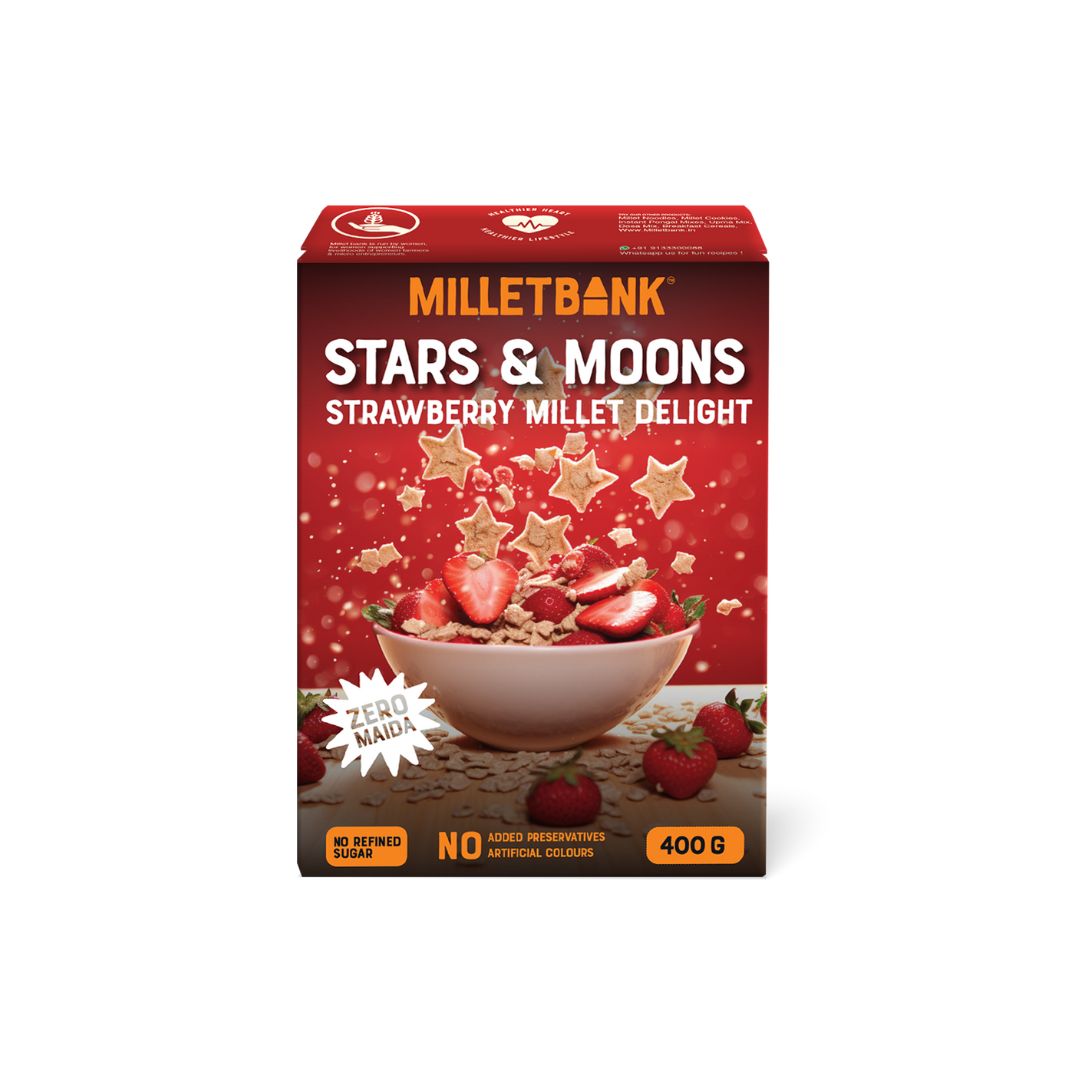FINGER MILLET

FINGER MILLET
Origin and Cultivation of Finger Millet :
Finger Millet, commonly known as Ragi, is an ancient grain that originated in the highlands of Ethiopia and Uganda. In India, Ragi is primarily cultivated in Karnataka, Tamil Nadu, Andhra Pradesh, and Maharashtra. It thrives in dry and hot climates, making it an ideal crop for dryland agriculture. Ragi is highly resilient to harsh weather conditions, ensuring a stable yield even in challenging environments.
Consumption and Culinary Uses :
Ragi is a staple in many South Indian diets, where it is consumed in various forms. It is commonly ground into flour to make rotis (flatbreads), dosas (savory pancakes), and porridge. Ragi can also be used in baking, making cookies, cakes, and bread. Additionally, it is used to prepare traditional dishes like Ragi Mudde (a steamed dumpling) and Ragi Malt (a nutritious drink). The versatility of Ragi makes it a popular choice for both traditional and modern culinary applications.
Nutritional Values and Benefits :
Finger Millet is celebrated for its exceptional nutritional profile. It is rich in calcium, iron, and dietary fiber, making it a vital grain for bone health, anemia prevention, and digestive health. Ragi also contains essential amino acids and antioxidants, which help in managing blood sugar levels and reducing the risk of chronic diseases. Its high protein content makes it an excellent food for muscle repair and growth.
Millet Bank's products with Ragi .
At Millet Bank, we harness the nutritional power of Finger Millet to create a variety of innovative products. Our range includes Multimillet Pasta, Multi Millet Instant Noodles, and delectable snacks like Spicy Garlic Puffs and Sour Cream and Onion Pops. We also offer sweet treats such as Strawberry Fills, Blackforest Fills, Chocolate Fills, Chocolate Stars and Moons, Strawberry Stars and Moons, Ragi Chocolate Cookies, and Ragi Elaichi Cookies. By incorporating Finger Millet into our products, we aim to promote healthy eating while supporting sustainable farming practices and improving the livelihoods of farmers in dryland regions.





















